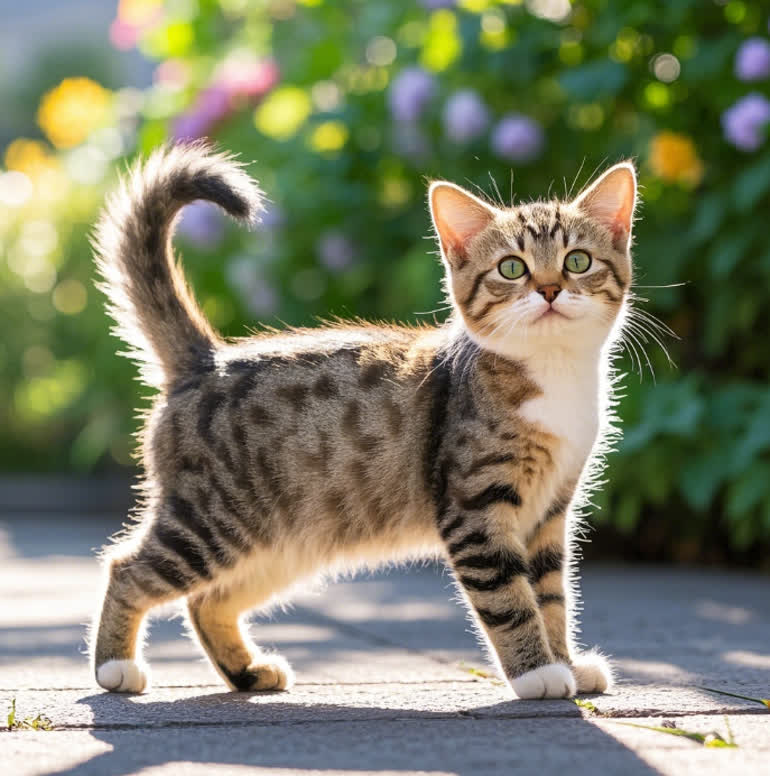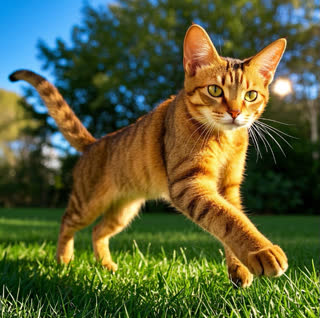As any cat owner knows, our feline friends have a knack for getting into mischief—whether knocking over a glass of water, scratching the furniture, or waking us up at 3 a.m. But when your cat misbehaves, do they actually feel remorse? While cats don’t experience guilt in the same way humans do, their body language can signal something surprisingly close to an apology. In this article, we’ll explore cat apology signs and feline apology body language, helping you decode your cat’s silent messages and strengthen your bond.
The Science Behind Feline Apologies
Before diving into specific behaviors, it’s important to understand why cats display what we interpret as apologies. According to Dr. Sarah Ellis, a certified applied animal behaviorist, cats use body language to communicate their emotional state. When a cat misbehaves and senses tension or frustration from their human, they may exhibit appeasement behaviors to reduce conflict. These gestures aren’t “apologies” in the human sense but serve as peace offerings to maintain harmony in their environment.
Key studies from the University of Lincoln show that cats adjust their behavior based on human reactions. If a cat’s action leads to a negative response, they may learn to associate that behavior with conflict and modify their body language accordingly. This adaptive behavior is rooted in their survival instincts—maintaining a safe, stress-free territory is crucial for their well-being.
10 Common Cat Apology Signs and Body Language Cues
1. Ears Held Back or Flattened
When a cat feels threatened or anxious, they often pull their ears back against their head. This posture is a clear sign of submission, indicating they recognize your displeasure and want to avoid confrontation. Combine this with a lowered head, and your cat is likely signaling, “I’m sorry—please don’t be upset.”
2. Slow Blinking
One of the most adorable cat apology signs is the slow blink. When your cat locks eyes with you and slowly closes their eyelids, it’s their way of saying, “I trust you and mean no harm.” This behavior mimics the relaxed blinking of content cats, reassuring you that they’re not a threat.
3. Tucked Tail
A tail tucked tightly between the legs is a classic sign of fear or submission. If your cat’s tail is low and motionless after misbehaving, they’re likely trying to make themselves appear smaller and less intimidating. This posture communicates vulnerability and a desire to de-escalate the situation.
4. Rolling Over to Show the Belly
While a belly-up position usually means a cat is relaxed, it can also be a sign of appeasement. If your cat flops onto their back after causing trouble, they’re offering a non-threatening stance. However, be cautious—some cats may still react defensively if approached too quickly.
5. Exaggerated Grooming
Cats groom themselves to self-soothe when stressed. If your cat suddenly starts over-grooming after a mishap, they’re not just cleaning—they’re trying to calm themselves down. This behavior also signals a desire to avoid conflict by focusing on something neutral.
6. Bringing “Gifts”
From dead bugs to toys, cats sometimes present offerings after misbehaving. This behavior stems from their hunting instincts—bringing prey is a way to share resources and strengthen social bonds. While it might not feel like an apology, it’s your cat’s attempt to make amends.
7. Quiet Vocalizations
A cat that’s usually talkative but suddenly becomes quiet after a mistake may be signaling discomfort. Soft meows, chirps, or purring can be their way of seeking reassurance without escalating tension.
8. Avoiding Eye Contact
Direct eye contact is a challenge in cat language. If your cat looks away or turns their head after misbehaving, they’re avoiding a confrontational stare. This is their way of respecting your space and showing deference.
9. Rubbing Against You
Cats rub against people and objects to mark their territory with scent glands. After a mishap, this behavior can also be a way to reaffirm their bond with you. By rubbing against your legs or furniture, they’re seeking comfort and reconnection.
10. Hiding or Freezing
Some cats respond to conflict by hiding under furniture or freezing in place. This is a stress response—they’re trying to avoid your attention until the situation calms down. Forcing interaction during this time may increase their anxiety.
How to Respond to Your Cat’s Apology
When your cat displays feline apology body language, it’s essential to respond in a way that reinforces positive behavior:
Stay Calm: Avoid yelling or punishing your cat, as this can increase stress and anxiety.
Offer Affection: Pet your cat gently or engage in a play session to rebuild trust.
Redirect Behavior: Use positive reinforcement to encourage desirable habits, such as providing scratching posts instead of scolding for furniture damage.
Create a Safe Environment: Ensure your cat has hiding spots and resources to reduce stress in the future.
Myths vs. Reality: Do Cats Actually Apologize?
While cats don’t understand apologies as humans do, their behavior often aligns with what we interpret as remorse. Here’s a breakdown of common myths:
- Myth: Cats apologize to manipulate humans.
Reality: Their gestures are instinctual attempts to reduce conflict, not calculated manipulation. - Myth: Only “guilty” cats apologize.
Reality: Any cat may display appeasement behaviors if they sense tension. - Myth: Cats hold grudges.
Reality: Cats are quick to forgive and move on, provided the conflict is resolved.
Conclusion: Strengthening Your Bond Through Understanding
By learning to recognize cat apology signs and feline apology body language, you can deepen your connection with your furry friend. Remember, cats communicate through subtle cues—their “apologies” are a testament to their ability to adapt and thrive in human households. The next time your cat misbehaves, look for these signals and respond with patience and kindness—your relationship will thank you.
Final Thoughts:
Understanding feline behavior not only helps in resolving conflicts but also enriches your daily interactions. After all, a cat’s silent apology is just another reminder of how uniquely wonderful these creatures are.
Understanding feline behavior not only helps in resolving conflicts but also enriches your daily interactions. After all, a cat’s silent apology is just another reminder of how uniquely wonderful these creatures are.










